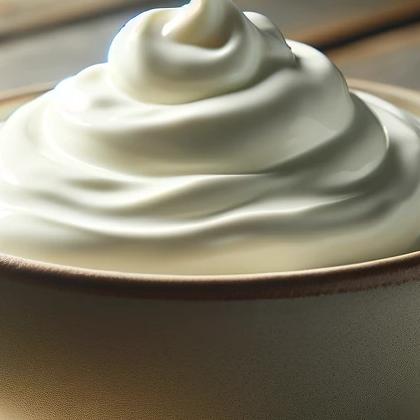Showing results for 'Sour Cream'
close
Sour Cream

Sour Cream is made from fermenting a regular cream with certain types of bacteria. It is used to add richness and tangy flavor to food.
Sour Cream Pairs With:
Food Item
Flavor Affinity Level
Sour Cream Properties:
| Food Property | Type | Description |
|---|---|---|
| Flavor Profile | Sour | Sour cream has a tangy and slightly acidic taste that is characteristic of dairy products that have undergone fermentation. |
| Texture | Creaminess | Sour cream has a smooth and creamy texture due to its high fat content. |
| Nutritional Value | Macronutrients | Sour cream is a good source of fat and protein, with a moderate amount of carbohydrates. |
| Micronutrients | Sour cream contains vitamins and minerals such as calcium, phosphorus, and vitamin B12. | |
| Fiber | Sour cream does not contain significant amounts of fiber. | |
| Color | Natural Pigments | Sour cream is typically white in color due to the dairy ingredients used in its production. |
| Aroma | Volatile Compounds | Sour cream has a slightly tangy and dairy-like aroma. |
| Chemical Composition | Acidity/Alkalinity (pH) | Sour cream has a lower pH due to its lactic acid content from fermentation, giving it its characteristic tangy taste. |
| Cooking Behavior | Heat Conductivity | Sour cream can curdle if exposed to high heat, so it is often added to dishes at the end of cooking to prevent separation. |
| Water Retention | Sour cream can help retain moisture in baked goods and add richness to dishes when heated gently. |
Food Pairing App - Version 1.2.0
